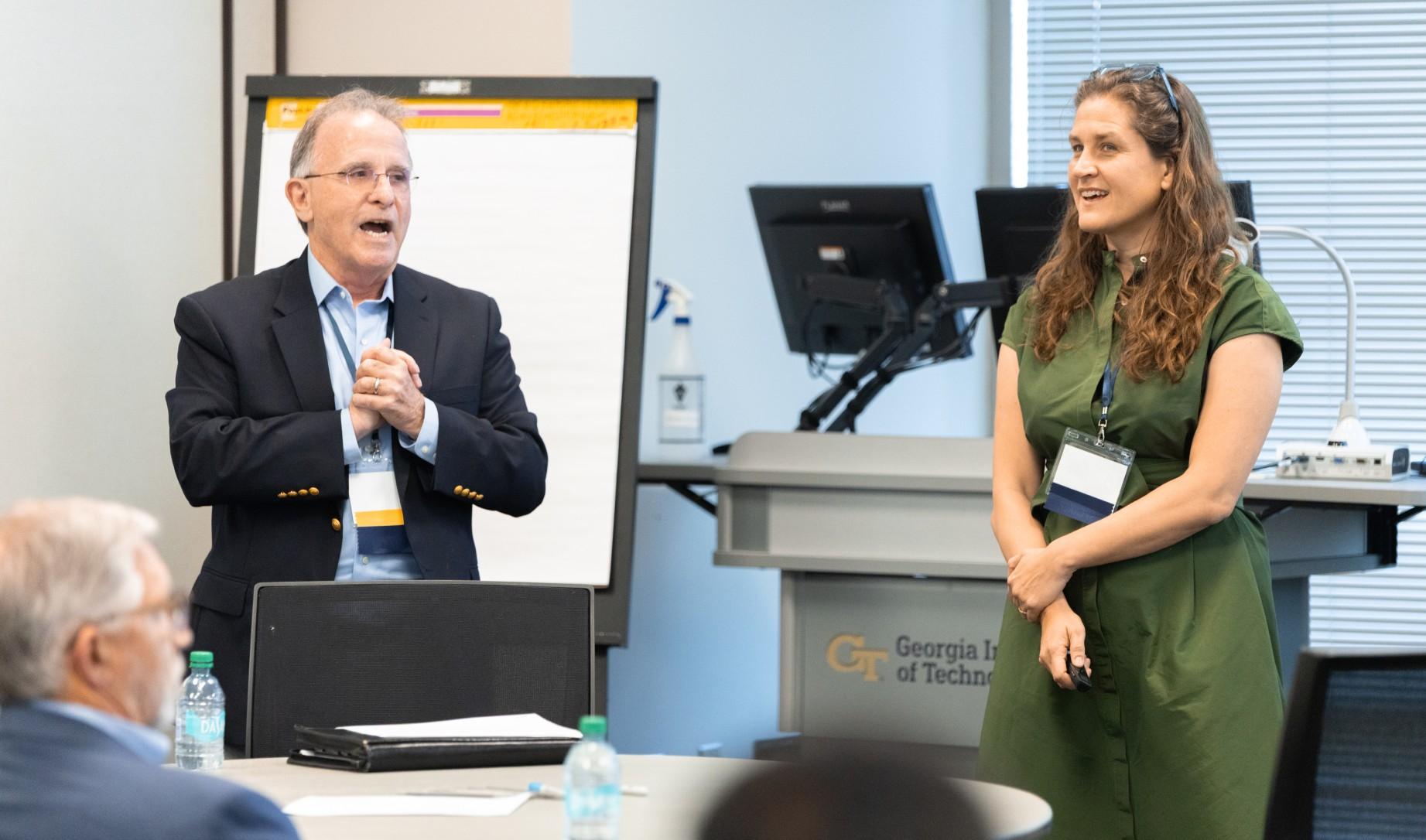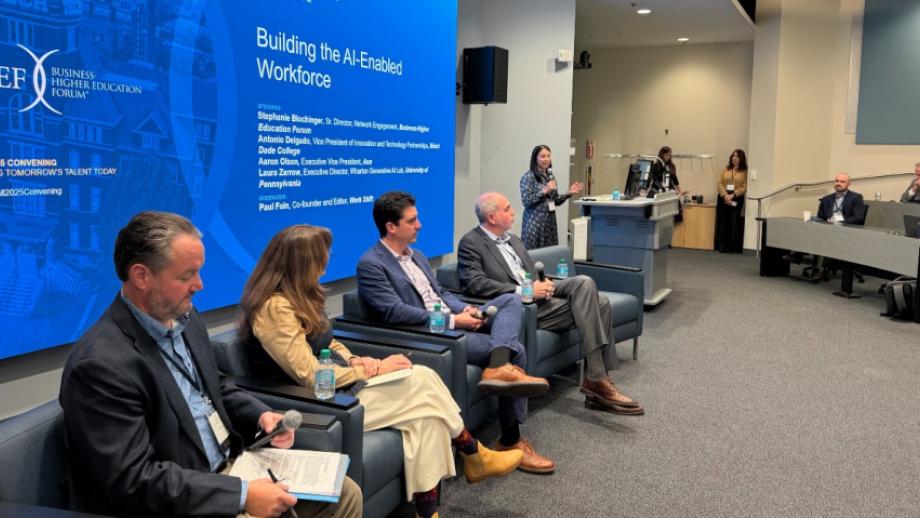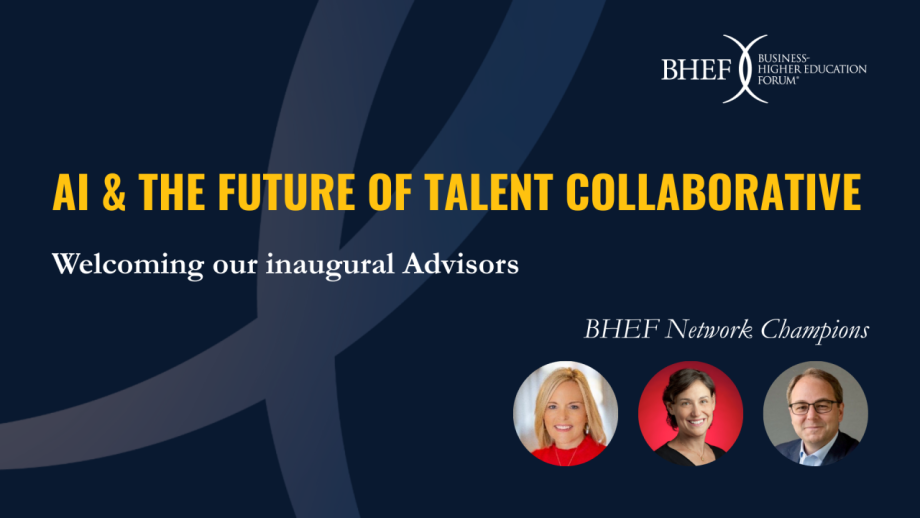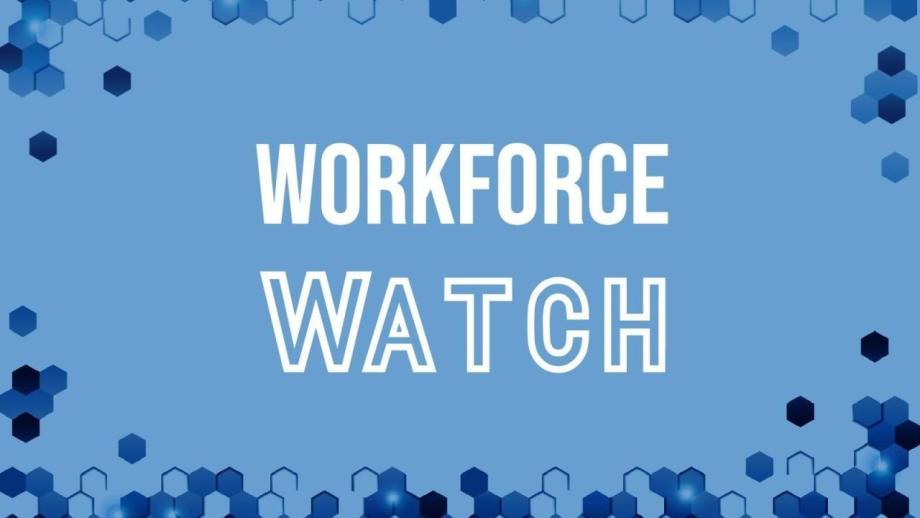At the 2025 Business-Higher Education Forum (BHEF) Fall Convening, one key theme that stood out among corporate and college leaders is that work-integrated learning is a must-have and increasingly recognized as integral infrastructure in preparing talent for the future of work.
We know that learning is no longer linear in today’s world of fast-changing skills. When technological advances reshape job requirements faster than we’ve ever experienced before, integrating work and learning creates symbiotic feedback loops between classrooms and workplaces. This feedback allows both businesses and educational institutions to build and refine talent development systems in real time.
We also know that there is simply not enough supply of work-integrated learning today. While employers want work-ready talent and see internships as a key hiring element, our research at BHEF has shown that fewer than 1/3 of U.S. college graduates had a job or internship where they applied what they are learning in the classroom. Last year only 44% of the students who wanted an internship were able to access one. And in a labor market where the nature of entry level roles is changing and early career hiring is tightening, experience through work-integrated learning is even more urgent to prepare today’s young people for successful futures.
So, in Atlanta, we brought together business and higher education leaders from across the country to explore what's working, what's not, and how to scale education-to-employment pathways that serve both talent and employers. The BHEF network has been hard at work on this problem, leveraging the shared power of network expertise to build solutions to shared challenges.
Work-integrated learning is essential infrastructure
Apprenticeships, internships, learn-and-work co-ops, projects, and other career-connected experiences provide critical connective tissue between education and an evolving world of work. And in a world of work being drastically changed by AI, 50% of executives at the meeting indicated that experiential and work-based learning solutions are what they see as the best opportunity to prepare today’s learner for an AI-enabled workforce.
The European work-and-learn model came up as a reference point — not as a template to copy, but as proof that work-integrated learning pathways can deliver quality and scale if these are designed collaboratively between businesses and higher education institutions. When employers commit resources and time to make these programs work, students show up ready to contribute — and companies see measurable returns on their investment.
There is no one-size-fits-all model, and internships, co-ops and projects were all discussed as design options depending on learner and employer needs. But across all models, the critical design ingredients that prepare students for a changing world of work include ensuring that models align to employer needs and interests. All models should also offer exposure to real-world challenges including ambiguity, deliver real feedback in a professional setting, engage students in reflection and self-awareness of skills, and enable social-network expansion.
There’s a new approach to sourcing talent
Leading employers shared examples of their commitments—and varied approaches—to work-integrated learning that meets their business and talent goals. Zurich North America’s two-year apprenticeship programs hire high school graduates into permanent roles from day one, and the company currently has around 400 apprentices employed in degreed-apprenticeship programs, and achieves 84% retention rates.
Another national manufacturing firm shared their apprenticeship model that is deployed in partnership with community colleges as part of their talent strategy. Beyond the bottom line on talent development lies an additional benefit: long-term partner relationship development. As one of the leading talent developers of specialized talent in their industry, they produce graduates who stay with their firm and others who move to partners, bringing a strong allegiance to the firm that got them their career start, creating a network of dedicated alumni throughout their supply chain that pays long-term dividends.
Siemens shared a different approach to work-integrated learning designed for scale and adoption across higher education partners. They developed a new engineering micro-credential that colleges can embed toward the end of the academic experience to support early career engineers in developing the digital skills required to leverage new technologies like AI and the mindset to integrate these tools into the real world, using real world contexts and examples to bridge from classroom to the workplace.
Institutions are also building this exposure and infrastructure in concert with industry leaders. For example, Miami Dade College’s AI upskilling programs focus on building AI skills and literacy for mid-career adults. Seventy percent of participants are over age 26, and the largest cohort within that group are age 41 and older. Their programs include embedded industry-recognized credentials from AWS, Google, and Intel, and they see 40% female participation — significantly higher than traditional tech-focused degrees and programs.
The intentionality and scale of these efforts stand out. Leaders emphasized that work-integrated learning only succeeds when it's designed for mutual benefit. Employers need structured programs with clear expectations, while institutions need employers who understand that faculty and educators — with the right support structures — are key in connecting students to career opportunities.
Students need to be ready for the pace of work, not just landing a job
Business leaders shared that there are key skills early career professionals need, including resilience, agility, “get it done-ness,” working with other adults you don’t know in a professional setting, and solving unstructured problems. Work-integrated learning addresses this gap by exposing students to the pace and cadence of real work environments. This approach teaches new talent how to create value, how to communicate across functions, and how to adapt when priorities shift — durable competencies that build a foundation for employees to thrive in their careers.
One business leader spoke of her organization’s strategy to bring interns in during their busiest season — because that's when students learn to create value in unstructured, high-pressure environments. If people only partake in traditionally structured educational environments and only within their major, they're not learning to work cross-functionally.
Scaling partnerships is essential
A recurring theme: partnerships succeed when they're designed for mutual benefit.
To scale work-integrated learning, partners must achieve a shared vision of success. Institutions shared strategies like creating centralized employer engagement teams, developing templated partnership structures, and training on-campus supervisors to expand capacity. Alternatively, employers emphasized the value of collaborations where they contribute field and industry expertise, teaching specialized skills that faculty can't deliver alone.
The hardest part? Embedding these experiences into curricula in ways that feel both feasible to faculty and usable to students. Both corporate and college leaders acknowledged this can take time to get right. However, the institutions making the most progress have faculty buy-in, business community backing, and leadership willing to play the long game.
Looking ahead to 2026
The institutions and corporations meeting this moment understand that education is a lifelong companion to work, and work-integrated learning makes that possible. They're actively building ecosystems where learning and work are no longer separate tracks, but interwoven journeys that serve people at every stage of their careers.
If you are a corporate or education leader seeking to implement next generation work-integrated learning models that prepare tomorrow’s talent, consider joining the Business-Higher Education Forum network to become part of our network building and testing solutions. The waitlist for our invite-only BHEF Spring Convening taking place March 24-25, 2026 is now open, too. The work continues — and we go further faster when we work to solve these critical challenges together.







